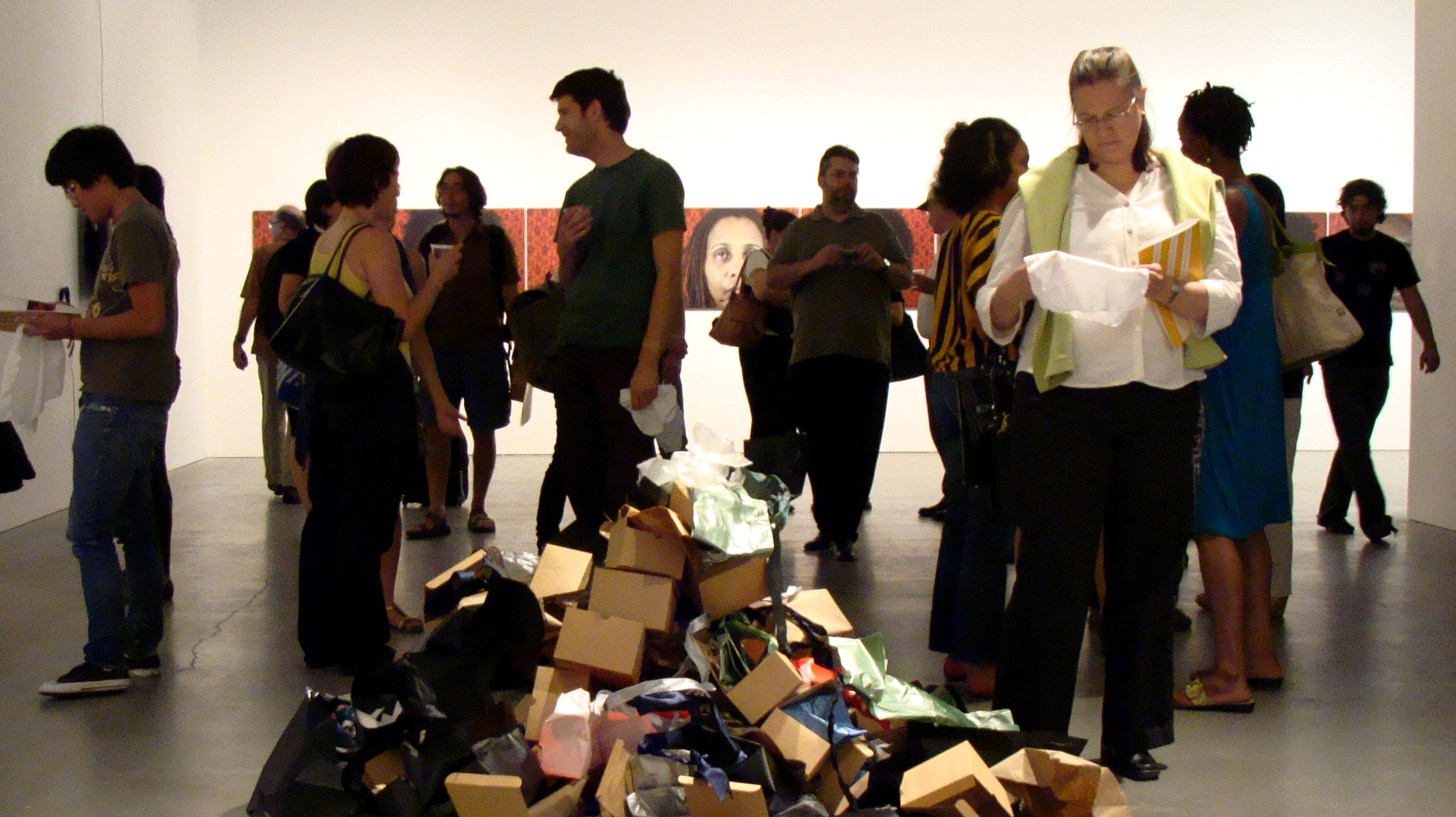Name a famous artist. Most likely, the first thoughts will be European names: Leonardo, Michelangelo, perhaps even Monet.
But try naming a non-European artist, and there might be a pause. It is this lack of knowledge of non-Western artists that is the source of inspiration for “Without,” a new art exhibit at the Broad Art Center which runs until Oct. 8.
“Without,” the department’s 2009 biennial exhibition, serves to showcase the curatorial skills of graduate students within the master of fine arts program. Meleko Mokgosi, a second-year master of fine arts student, proposed the year’s theme and said that he wanted to explore the different manifestations of what can be loosely termed as “non-Western art,” or artwork which originates from locations such as Africa, Asia and Latin America.
“The term “˜non-Western’ describes nothing. It’s an empty signifier for me,” Mokgosi said. “The way I thought of it is that it’s always on the radar, but it’s not something that should determine the worth of (an artwork).”
Russell Ferguson, the chair of the UCLA Department of Art, was part of the faculty committee who decided on the themes for the biennial and said that he found Mokgosi’s initial proposal to be intriguing.
“He had a very focused idea about what he wanted to do so it seemed like it would be a very coherent exhibition,” Ferguson said.
The theme arose after what Mokgosi said he saw as a lack of racial diversity in the master of fine arts program, especially having moved to Los Angeles from New York.
“Getting (to UCLA), it was a bit frustrating to get into a situation or a program where racial differences weren’t at the forefront of discussion, especially at an MFA program,” Mokgosi said.
Mokgosi curated the event with the assistance of Erica Cooke, an independent curator. The many artists who are featured in the exhibition share one thing in common: an interest in the “non-Western” perspective and the exploration of social and political issues that surround it. That is not to say that all of the artists featured come from a non-Western country. For Mokgosi, the point of the exhibition was simply “to show art that’s not from the West.”
“The way we termed it is there’s no straight understanding of non-Western ““ it could be racial, it could be cultural, it could be religious, anything,” Mokgosi said. “It’s how those people saw themselves and what they were dealing with.”
The call for artwork was placed at institutions throughout California and out of more than 40 student submissions, 18 were chosen. Alexis Disselkoen, a UCLA alumna and a current second-year graduate student at UC Irvine, is one of the students whose work is featured in the exhibition.
Disselkoen’s piece, titled “Gift of Distance,” was an interactive performance that took place at the opening of “Without,” where each guest was given a wrapped box with a piece of cloth inside. The cloths were part of a map of the Mexican-American border and the residual wrappings were left behind at the gallery, forming a pile of boxes and wrapping paper.
Disselkoen, who was born and raised in Los Angeles County, drew inspiration for the piece from her grandparents’ journey from Mexico to the United States.
“Ever since I was young and heard where my grandparents came from and where my mom was born, I sort of fantasized about that journey,” Diselkoen said. “I wanted to give people this gift, this part of this map of the journey that’s sort of this fantasized memory I have of my grandparents.”
Disselkoen said she derives her inspiration from both American and Latin American sources, showing how the modern notions of what constitutes “Western” and “non-Western” art have been blurred.
“I come from what would be considered a Western tradition, yet my history and my grandparents are not. So I’m both at the same time and I’m not,” Disselkoen said.
Because many artists now work in both Western and non-Western traditions, for Ferguson, modern art cannot be categorized by geography.
“The thing that’s more interesting than saying “˜there’s this’ and “˜there’s that’ is looking at the flows back and forward between these two ways of thinking, about making art,” Mokgosi said.
Yet in the end, the methods utilized, the racial background or the issues tackled were not what Mokgosi wanted to emphasize in “Without.” For him, whether Western or non-Western, good art is universal.
“That’s really what we wanted to make a point of, that regardless of backgrounds or cultural specificity, the good work will come out, and at the same time avoid pigeonholing,” Mokgosi said.
